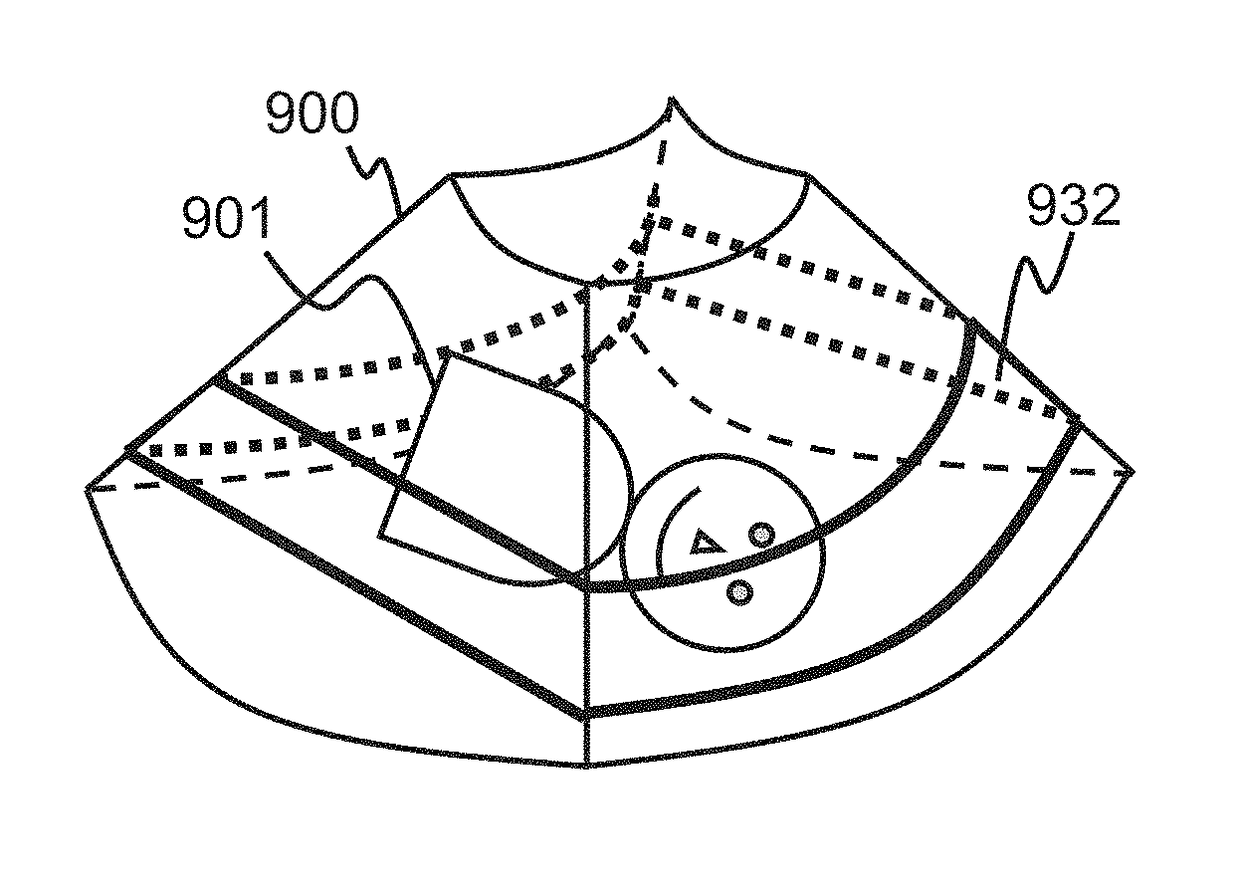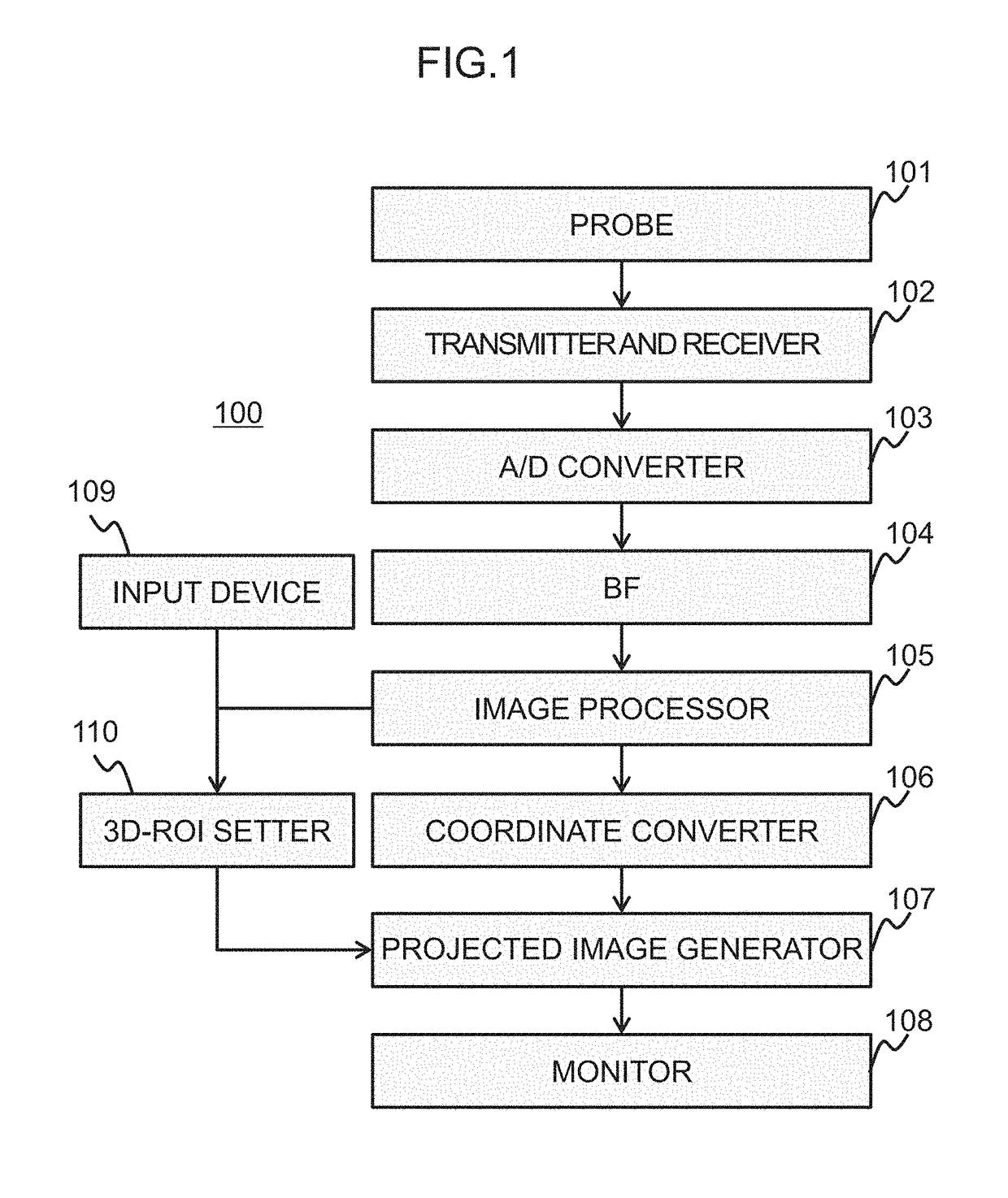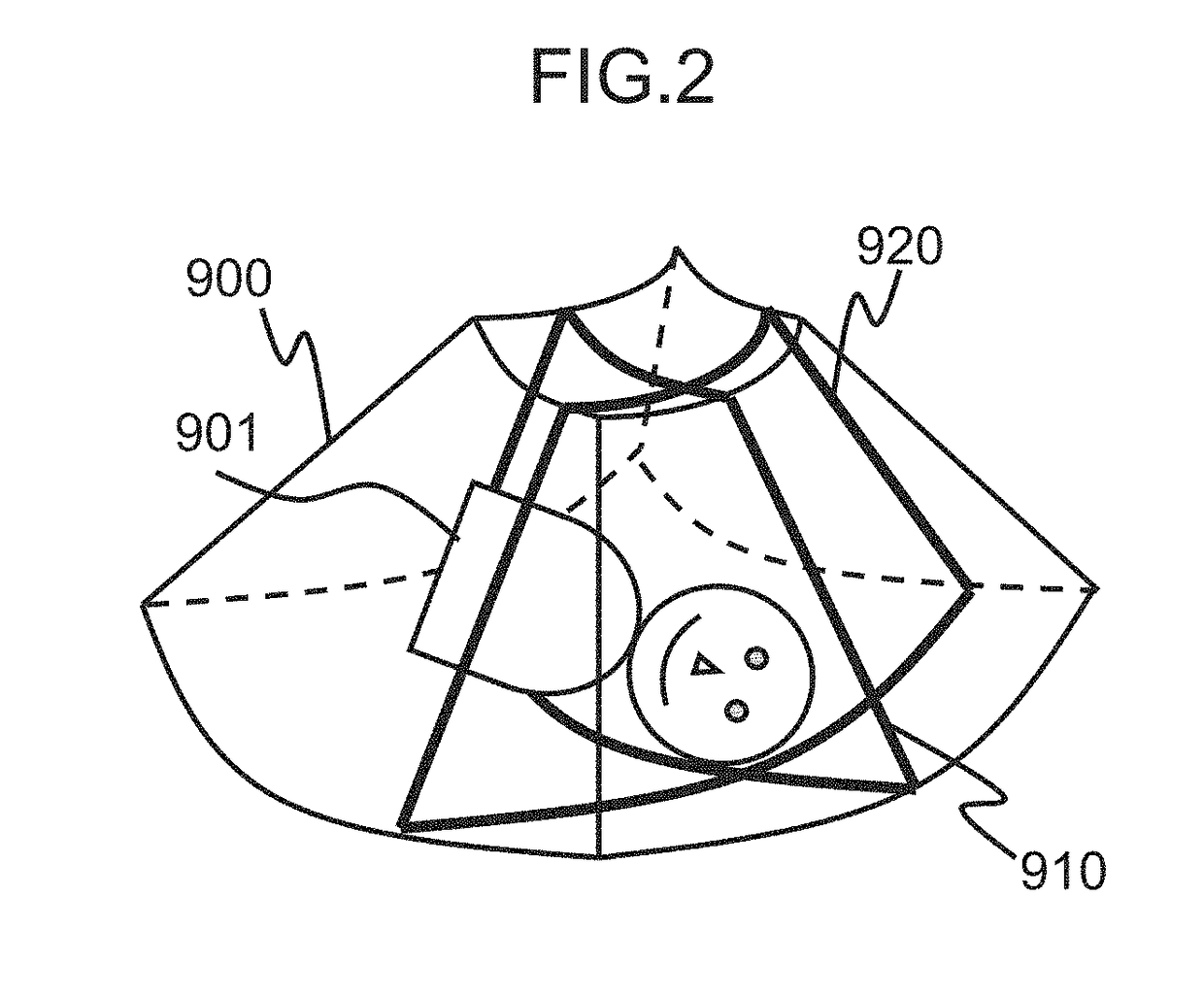Diagnostic image generation apparatus and diagnostic image generation method
a technology of diagnostic image and projection image, which is applied in the field of three-dimensional projection image generation, can solve the problems of inability to accurately extract the tissue to be imaged, difficult to distinguish between regions, and difficulty in establishing three-dimensional roi, etc., and achieves efficient interpretation of 3d image, high degree of accuracy, and increased burden on the operator
- Summary
- Abstract
- Description
- Claims
- Application Information
AI Technical Summary
Benefits of technology
Problems solved by technology
Method used
Image
Examples
first embodiment
[0038]The first embodiment to which the present invention is applied will be explained. Here, an ultrasound image-capturing apparatus will be taken as an example to explain the diagnostic image generation apparatus. A fetus is assumed as the tissue to be imaged. Therefore, floating substance in amniotic fluid, placenta, and the like, may be the tissue not imaged.
[Configuration of the Ultrasound Image-Capturing Apparatus]
[0039]FIG. 1 is a functional block diagram showing the ultrasound image-capturing apparatus (diagnostic image generation apparatus) according to the present embodiment. As illustrated, the ultrasound image-capturing apparatus 100 of the present embodiment is provided with a probe 101 with ultrasonic transducers configured to acquire three-dimensional echo data, a transmitter and receiver 102 configured to control a transmit pulse and amplify a received echo, an analogue / digital converter (analogue / digital converting means; A / D) 103 configured to digitalize the receiv...
second embodiment
[0110]Next, a second embodiment to which the present invention is applied will be explained. In the first embodiment, the user inputs the boundary curve in the same manner as a conventional example. Then, a start point for generating the energy map is determined, on the basis of the boundary curve inputted by the user, and the boundary curve is corrected assuming the start point as the point of origin. Here, in the present embodiment, the user inputs this start point, instead of the boundary curve.
[0111]The ultrasound image-capturing apparatus 100 of the present embodiment has basically the same configuration as the first embodiment. However, since the information inputted by the user is the start point, not the boundary curve, the configuration of the three-dimensional ROI setter 110a is different. Hereinafter, the present embodiment will be explained, focusing on the configuration that is different from the first embodiment.
[0112]Also in the present embodiment, an explanation will...
modification example
[0141]As shown in FIG. 20, the three-dimensional ROI setter 110b may further be provided with a noise reducer 230 configured to perform noise reduction process.
[0142]The noise reducer 230 applies the noise reduction process to the tomographic image (here, the axial image 400) that is used in the process performed by the three-dimensional ROI setter 110b. The noise reduction process may include a smoothing process and a filtering process, such as Gaussian smoothing and Median filtering. It is desirable that a filter used in the filtering process is an edge preserving type, such as bilateral filter and Guided Filter, which removes only the noise caused by a floating substance, multiple reflection, and the like, within the amniotic fluid having a relatively low brightness value, and holds the shape information of the fetus.
[0143]The accepting part 210a presents the user the axial image 400 after the noise is reduced and then accepts the designation of the start point 411. The energy ma...
PUM
 Login to View More
Login to View More Abstract
Description
Claims
Application Information
 Login to View More
Login to View More - R&D
- Intellectual Property
- Life Sciences
- Materials
- Tech Scout
- Unparalleled Data Quality
- Higher Quality Content
- 60% Fewer Hallucinations
Browse by: Latest US Patents, China's latest patents, Technical Efficacy Thesaurus, Application Domain, Technology Topic, Popular Technical Reports.
© 2025 PatSnap. All rights reserved.Legal|Privacy policy|Modern Slavery Act Transparency Statement|Sitemap|About US| Contact US: help@patsnap.com



